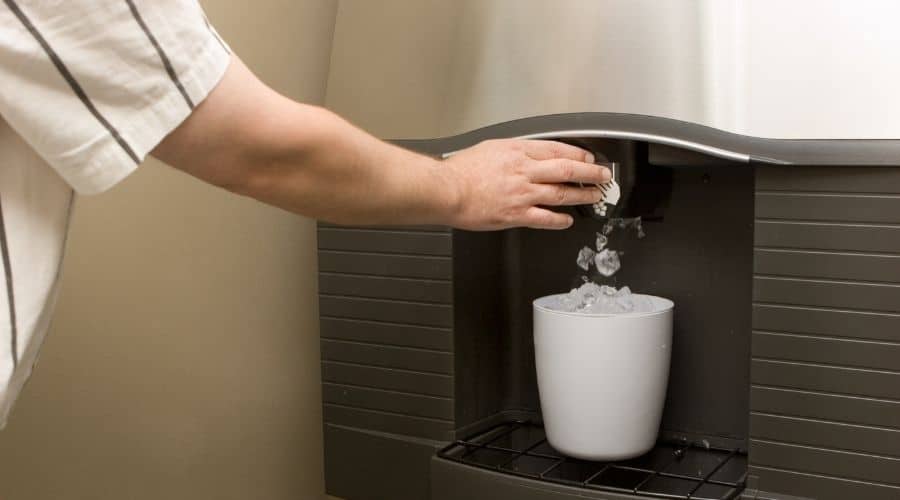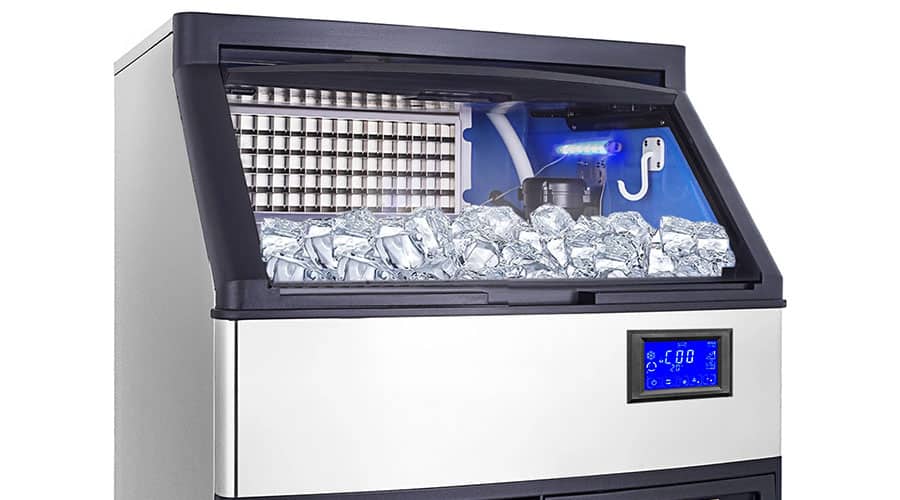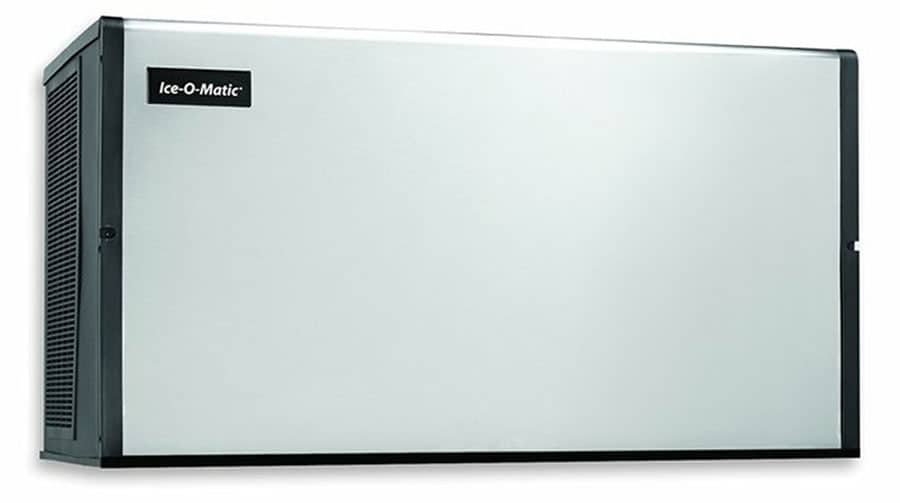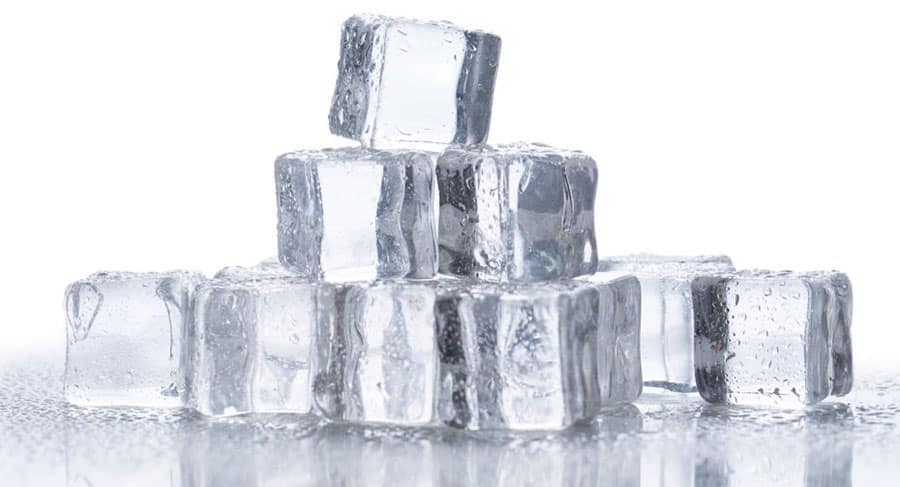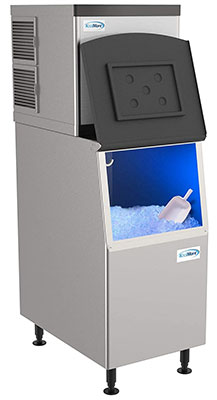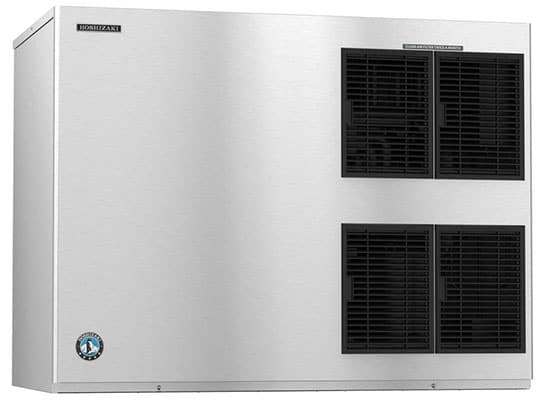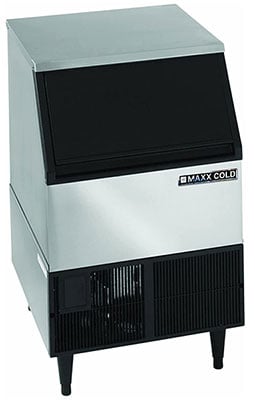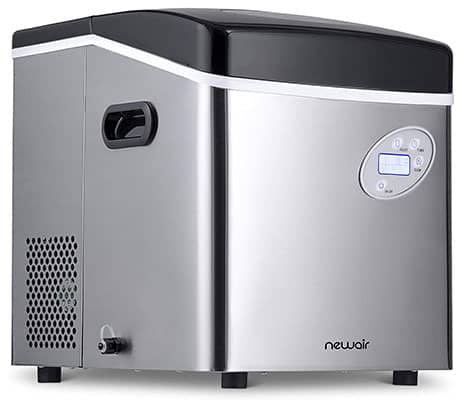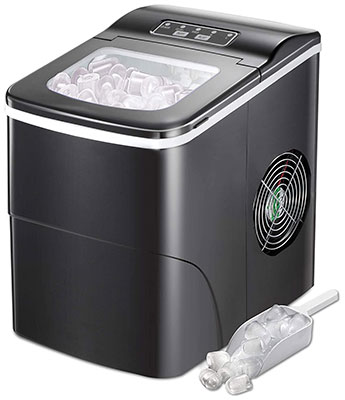Whether you’re on the hunt for a commercial ice machine or an ice dispenser for your home, there’s much to consider, from the shape of the ice cubes to the amount of space you have for an ice machine.
Who knew ice was such a complex affair? Our guide on the different types of ice makers is here to help! We discuss the features of each model, so you know exactly what to look for.
What to Consider When Choosing an Ice Machine
The perfect ice machine for your needs does exist, and it starts with proper sizing.
If you run a bar or restaurant, you may need a modular unit that produces large quantities of ice. But if you want an ice maker for entertaining at home, then a compact, portable unit might be more your style.
That’s why you’ll want first to determine how much ice you need to produce in a day and how much space you have available for an ice machine.
There are a few ways to estimate this. For example, you can talk to your restaurant staff to get an idea of how many drinks are served in a day, or if your business is just getting off the ground, start with a smaller machine and upgrade as service increases.
Next, choose a spacious area to install your ice machine where it won’t be shoved tightly between other appliances with no airflow.
Ventilation is important because ice production decreases if the machine gets too hot, and mechanical issues can arise.
Your machine should also have proper drainage, whether it’s situated close to a sink or near a floor drain. Make sure to establish an air gap, which keeps water from running back up the drainage pipe and into the machine.
Got it figured out? Because it’s time to look at condensing units!
Types of Condensing Units
Another important factor to consider when choosing your ice machine is the best condensing system to cool down the device properly.
There are 3 types of condensing machines:
1. Air-Cooled
Air-cooled condensers are the most common units, especially for commercial purposes. This type of setup utilizes fans and vents to circulate air throughout the machine and push hot air out to keep the unit cool.
It’s cost-effective and energy-efficient, and some models are recognized as Energy Star compliant.
Bear in mind, though, that this type of condenser needs at least 6” of clearance from where the air is drawn in and discharged for optimal results.
2. Water-Cooled
If it’s difficult to control the temperature in the environment, then a water-cooled condenser is most ideal. Air-cooled dispensers can’t perform as well in warmer environments.
Water-cooled dispensers use coils located within the ice machine to feed heat into water, and as the water drains out, the heat is discharged with it.
This system is efficient and reliable, but do bear in mind that a water-cooled dispenser will use a lot of water…up to 5x more than an air-cooled machine.
3. Remote-Cooled
This air-cooled condenser must be installed separately from the ice machine, such as on a rooftop outdoors. The refrigerant lines run between the condenser and the ice machine.
The perks of using this type of setup are low noise level, and the heat is dealt with away from the ice machine- and away from customers sitting at the bar.
But, remote dispensers are often high maintenance, and you’ll need to pay to have this setup professionally installed. This is usually Plan C if air-cooled or water-cooled systems aren’t possible.
Ice Machine Ice Types
After you’ve got sizing down and know the best condenser unit for your operation, it’s time to look at ice maker ice types.
Believe it or not, the shape of an ice cube says a lot. There are many different shapes and textures, all serving different purposes besides making a drink cold.
Depending on your home or business, you’ll want to consider your consumer base and what you’ll be using the ice for. Here’s a quick breakdown of the various ice machine cube types.
- Flaked ice/shaved ice: Soft and chewy, this fun-sized ice is what you’ll see used for seafood displays at the market to keep products cool. It’s also used at nursing homes and medical care centers for wounds.
- Full cube ice: This is the typical beverage ice that you’ll get at a restaurant with your soda, or you can buy it bagged at gas stations and grocery stores. These thick cubes chill drinks fast, without watering them down.
- Half cube ice: This type offers the same benefits as the full cube, except in a smaller package. It’s suitable for restaurants, bars, bagging, and ice dispensers.
- Nugget ice: This is softer ice, mainly used for restaurants, bars, hotels, and healthcare facilities.
- Crescent ice: You get a cute moon-shaped ice cube that is ideal for beverages, bagging, and ice dispensers. You’ll find this type at restaurants, convenience stores, and used by catering companies.
- Gourmet ice: A cylinder or octagon shape defines this luxury cube. It’s mainly reserved for cocktails and alcoholic beverages.
6 Types of Ice Machines
Ready to meet the ice machine of your dreams? There are six different types to choose from, each offering its own unique features, sizes, and ice capacities. Let’s take a look!
Modular Ice Machines
- Most ideal for: restaurants, fast food establishments, hospitality, cafeterias
- Ice capacity: Can produce from 45 to 3,000 pounds per day
This is the most common type of ice maker that comes in various sizes- even Slimline for narrow spaces. It can produce a large quantity of ice in a day, making it the top choice for restaurants, hotels, hospitals, and large commercial settings.
Versatile and functional, you can easily pair this with a separate dispenser and ice bin, according to the amount of ice you need to store.
Modular ice machines can work with an air-cooled condenser or water-cooled condenser. If you choose air-cooled, you’ll use less water and energy compared to other systems.
Stackable Ice Machines
This unit is part of the modular family but is designed to produce large quantities of ice in a smaller space.
In other words, if you don’t have a lot of room for a hefty modular unit, you can place stackable units on top of each other without incurring any damages or hampering ice production.
This ice maker is also great for new food and beverage businesses that don’t yet know how much ice to produce. They can start with one unit and stack more until it’s determined how high of a volume must be produced per day.
Bear in mind that air must flow freely around the machines to keep heat from getting trapped and damaging the equipment.
It’s also difficult to clean stackable machines since you have to lift the top to get to the bottom.
Self-Contained Ice Machines
- Most ideal for: small restaurants, bars, cafes, food trucks
- Ice capacity: 60 to 700 pounds per day
For smaller businesses needing less ice, countertop or undercounter self-contained ice makers are a solid choice to save on water and electricity.
These smaller machines come equipped with storage built right into the machine, so there’s no need to purchase an ice bin separately. You get an all-in-one setup that is convenient and compact.
Undercounter Ice Machines
If you lack counter space, then you might want to go for an under-counter model. These self-contained ice machines measure below 41”, making them compact and efficient.
This is perfect for people with disabilities who need a low-reaching machine or small businesses, especially bars where bartenders must have fast access to ice without working around a countertop unit.
These ice machines automatically refill throughout the day, giving the barback one less job to do.
Front-in/front-out airflow keeps the machine cooled down. This makes it possible to sandwich it under the counter or between cabinets without blocking ventilation.
Keep in mind that this type of ice maker is generally more expensive due to installation costs. It connects to the main water line and drains into a floor drain.
Counter Top Ice Machines
- Most ideal for: medical/health facilities, offices, lounge rooms, homes, cafeterias
- Ice capacity: 50 to 400 pounds per day
As you may have guessed, this type of ice maker sits on top of the counter instead of underneath it. Most also double as an ice dispenser, which is what you’ll typically see on a home refrigerator.
Since all you have to do is push a lever or button to have ice cubes dropped into your waiting cup, this model is considered safer to use since you don’t have to stick your hand into a bin.
That makes it ideal for homes where children are present and office settings.
Portable Ice Makers
- Most ideal for: homes, entertaining, travel, camping, tailgating, Barbecues
- Ice capacity: 35 lbs
With these compact ice makers, you don’t need a water line, but you do need to pour water into the tank to get those ice cubes forming.
Just move it to your room of choice, plug it into a power source, and you’re ready to chill. Portable ice makers produce ice quickly, in as little as 10 minutes.
If the ice sits for a long time, it will melt (portable machines do not act as freezers), and the water will recycle back through the machine to be turned into ice once more.
Also, bear in mind that since this is a small capacity machine, you’ll need a separate ice bin to store the freshly made ice, so the ice maker can continue to produce more.
Types of Ice Makers Conclusion
There are plenty of different types of ice makers to choose from, but you can narrow down the field by first determining the size of your business and the amount of ice you need daily.
If you’re strapped for space, then a stackable, undercounter, or portable ice maker are great choices. If you run a large-scale business, then a modular ice maker can produce up to 3000 lbs of ice per day.
Countertop models are great for the office and at home, especially if you’re looking for types of ice makers in refrigerators that dispense ice right into your cup.
References & Resources:
- 6 Amazing Ice Shapes Made By Ice Makers, Nathan Crowley.
- Ice Makers: The Cold Facts For Selecting the Right Equipment, Food Management.
- Ice Machines: An Overview, Foodservice Equipment & Supplies.
- How Icemakers Work, HowStuffWorks.
- How to Choose the Best Type of Ice Machine For Your Business?, SMB CEO.
